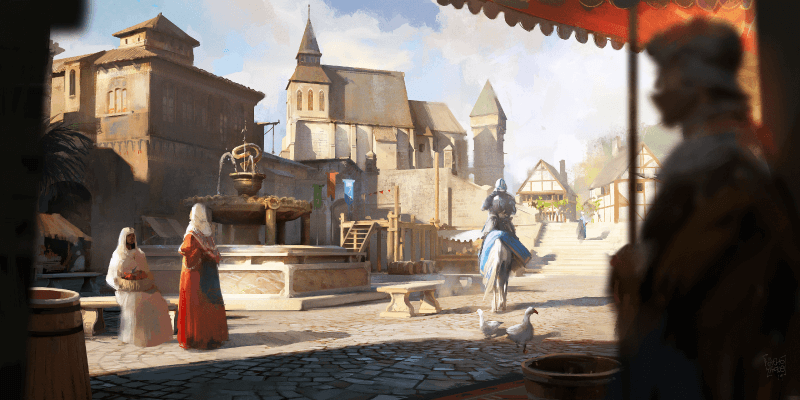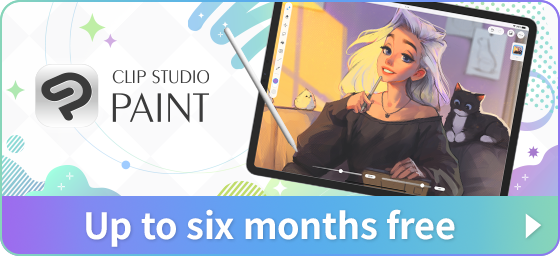What is concept art?
Concept art is the illustration of atmosphere and design direction for media works such as films, video games, and animation. Sharing ideas visually beforehand helps create a sense of unity in the production of the end product.
An illustrator who produces concept art is called a concept artist or concept designer. This job plays an important part in the design process of the work and influences the final product.
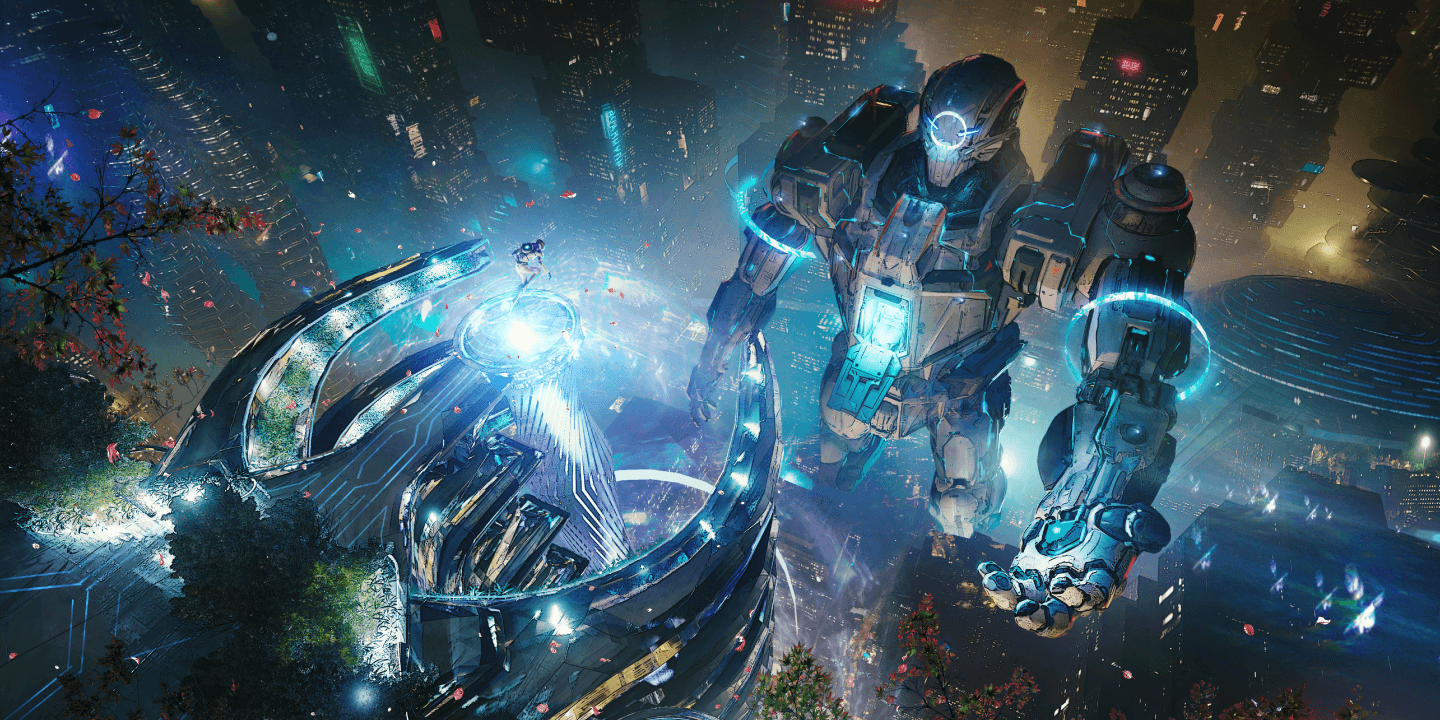
What types of concept art are there?
Concept art is essential for many types of works, including video games, films, and animation. And to give reality to the worldview, works need to be created that make the most of expertise in individual genres.
-
Concept art includes the following types:
- Building concept art: Designing structures such as buildings, ruins, archaeological sites, and fantastical castles that fit the style of the work.
- Character concept art: Character design for video games and films.
- Environment concept art: Designing realistic landscapes and fictional worlds in which characters traverse through based on the work.
- Weapon and prop design: The visualization of weapons, bombs, and tool props.
- Mech/vehicle concept design: The visualization of ideas for cars, airplanes, ships, etc.
- Animation concept art: Giving life through design to the cast of characters that will be the main drivers in the work.
How is concept art drawn?
Concept art is not the finished product, but rather the base upon which the design and worldview is created. The following introduces how it is produced and the process.
1. Decide on a clear concept
For films or video games, the art director or creative director will brief the concept artist about the requirements and commission concept art. Information will be shared about the character’s personality, the setting of the work’s world, and other elements the director would like to see incorporated into the concept art, as well as information such as the target audience for the film or video game being produced.
2. Gather reference materials
Reference materials are gathered in order to produce the work as requested. Gathering reference materials is important for defining the final product. The images gathered will be used as reference for the atmosphere of buildings, props, surrounding scenery, and hues. The key is to keep it to a maximum of 10 to 15 sheets without spending too much time on it.
3. Create thumbnails
Finally once your reference materials are gathered, thumbnails are drawn once a rough idea is established. Thumbnails are drawn starting from small monochromatic sketches. By using small monochromatic drawings, many ideas can quickly be given shape.
Thumbnails do not start as a line drawings. Silhouettes are created using simple black shapes. The silhouettes of buildings and characters will be useful later as place holders. Once the shape is determined, details and objects are added.
Silhouettes can be easily duplicated or modified using a digital art app such as Photoshop or Clip Studio Paint.
Then once the thumbnail is complete, only good ideas are continued to be drawn. In some cases, thumbnails are shown to the art director or team members producing together with the concept artist and they are asked to choose the ones they like.
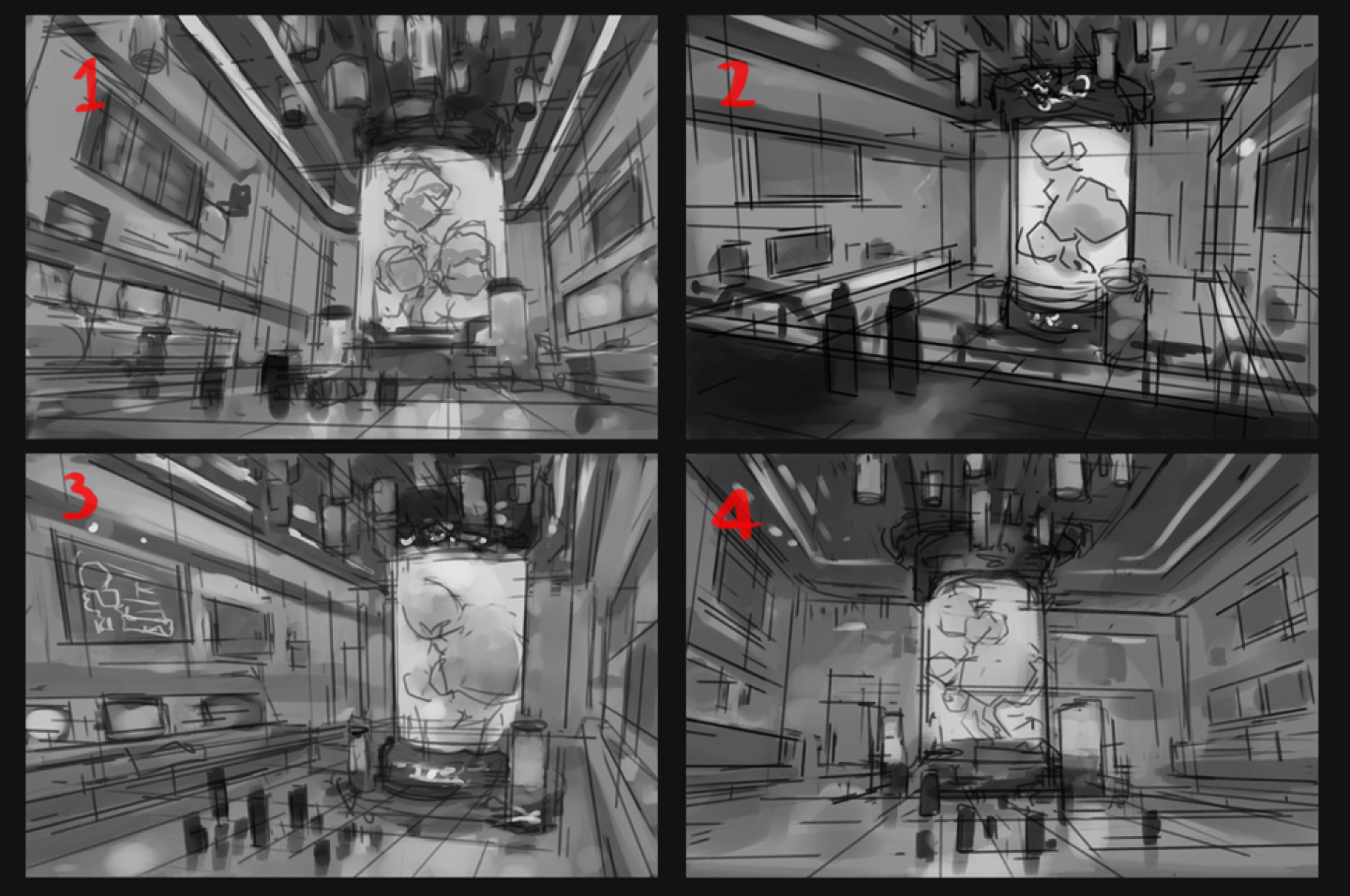
4. High resolution drawing
Using the top picks selected from the thumbnails, more detailed pictures are created. A new file is created with a high-resolution and larger size. The thumbnail is processed and enlarged. The larger size image allows for more detail to be added. The thumbnail is used as a draft and overlaid in black or gray. Details such as perspective and contrast between light and dark are adjusted. For characters, details such as clothing and adornments are added.
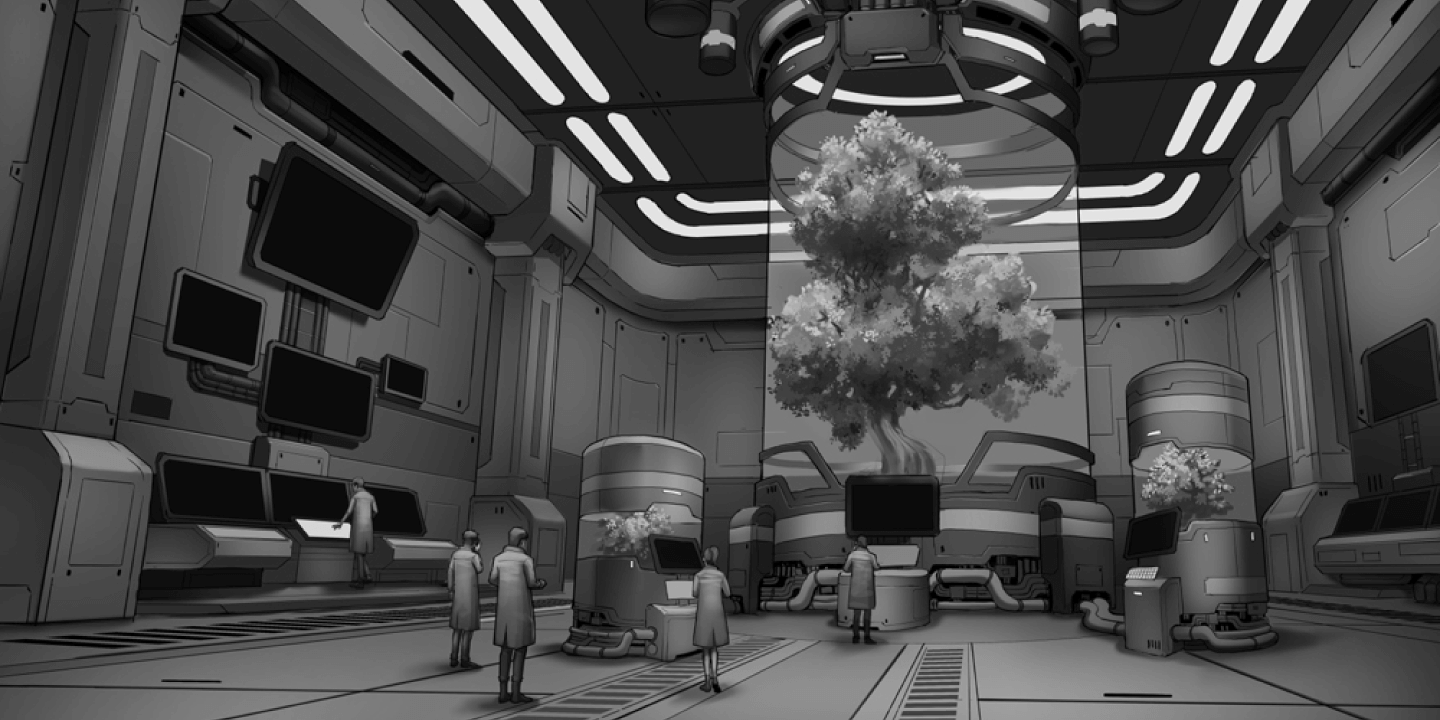
5. Finishing touches
The light source for the entire work is determined and it is colorized. In order to propose various colors to the art director or creative director, data that allows for the ability of multiple color possibilities is presented. With characters, the color can be changed for each part by separating it into layers. This is useful in situations like when you want to change only the hair color. With landscapes, the overall color tone can be changed by utilizing tonal correction and layer blending modes in your digital art app of choice.
The completed concept art is shared with the art director and the team members. Revisions are made if needed; or if complete, the concept art is used as the basis for the next process.
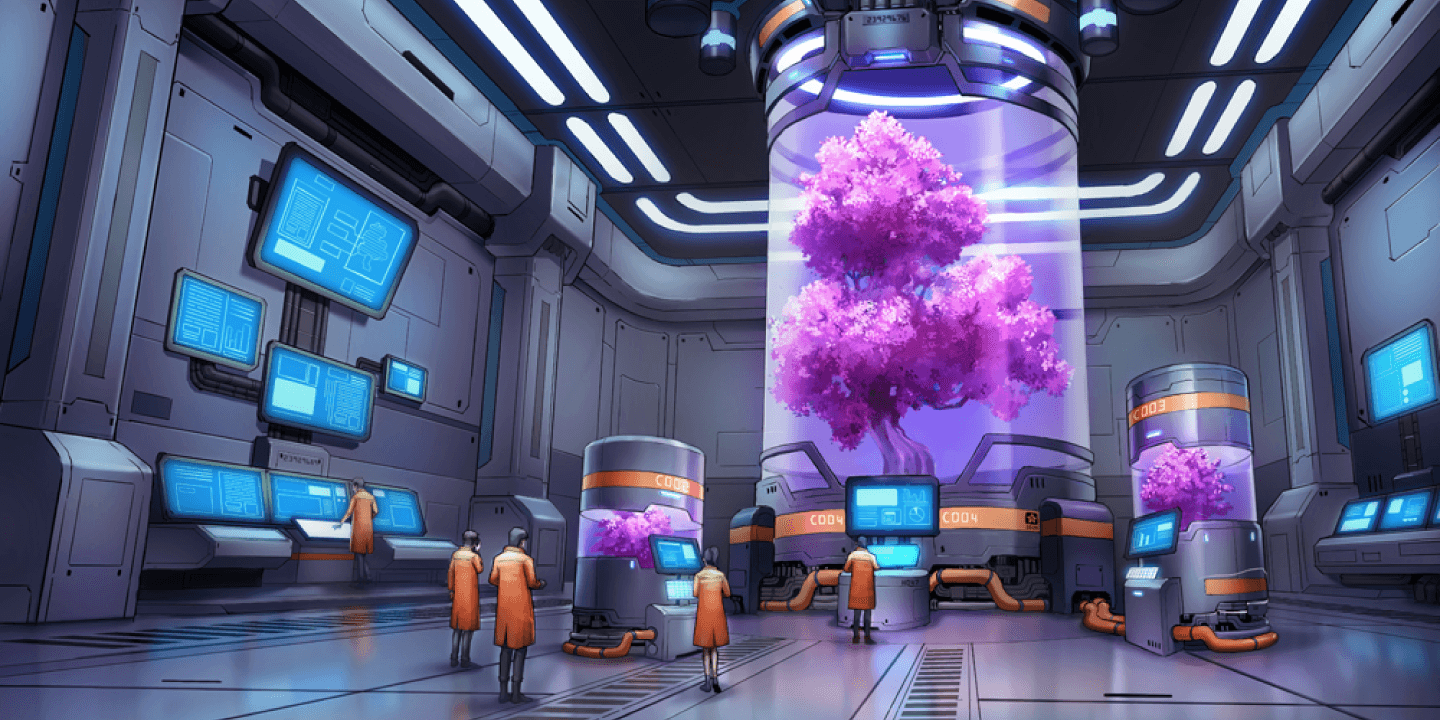
However, the process of producing concept art is not always as described here. The method will vary depending on the work to be made and the subject matter to be designed.
Concept art begins with proposing an idea. During the process of drawing concept art, it is important to check with the art director and the team members to ensure that everyone is on the same track. Therefore, the concept artist must have good drawing and communication skills. Nowadays, digital art app skills are also needed.
How does one become a concept artist?
The skills needed to become a concept artist or concept designer can be learned by attending a concept art school or the like to learn illustration techniques. Nowadays, skills can also be learned through online schools. At concept art school, one can also learn how to use many different software and apps.
It is also a good idea to create a portfolio as soon as you can. Naturally the best way to showcase one’s work is by publishing it on the Internet. If you want to become a concept artist, in addition to illustration skills, one also needs to be able to explain their concepts behind their illustrations.
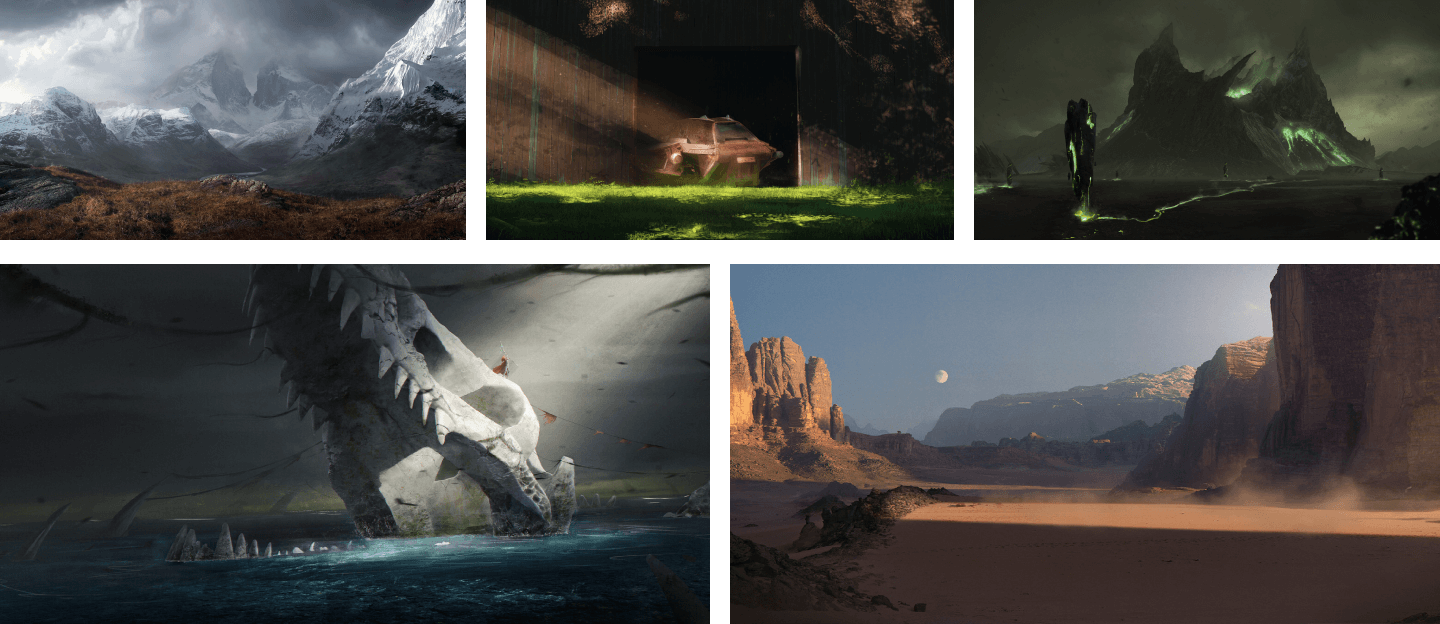
Why do concept artists use digital art apps for concept art?
In the past, concept art was created by hand, but today it is more common to create concept art digitally using drawing applications. These tools are widely used as powerful tools for efficient concept art production.
In the world of digital art, several key applications like Adobe Photoshop, Procreate, Krita, ibisPaint and Autodesk SketchBook have become essential for concept artists, each offering its own set of specialized features. Among these, Clip Studio Paint stands out for its focus on the specific needs of concept art creation, providing a unique blend of tools and functionalities tailored to artists and designers. The app has established itself as a key player in the industry by making it easy for artists to bring their ideas to life.
Let's explore some reasons why Clip Studio Paint stands out:
- Ease of Drawing and Customization:
Clip Studio Paint provides a wide array of brushes that are highly customizable, allowing artists to create their ideal brush for various artistic needs. Whether it's for intricate linework or smooth blending, Clip Studio Paint offers a natural drawing experience with minimal lag, making it efficient and enjoyable for illustrators.
- Perspective Ruler:
One standout feature of Clip Studio Paint is its perspective ruler, which simplifies the often complex task of creating perspective layouts. Artists can quickly and effortlessly construct accurate perspective spaces, saving time and enhancing productivity.
- Vector Layers:
Clip Studio Paint's Vector Layers feature allows you to draw smooth, precise lines and easily edit them even after they are drawn. The Vector Layers feature is one of the most powerful tools in Clip Studio Paint, useful for everything from line drawings to flat illustrations. Vector layers allow you to correct and edit lines that you have already drawn, and the quality of the lines is not lost when the image is enlarged or reduced. This allows you to add fine details and modify your work easily and efficiently.
By leveraging these features and many more, Clip Studio Paint empowers concept artists to bring their ideas to life with efficiency and creativity. Whether sketching rough thumbnails or adding finishing touches to high-resolution drawings, Clip Studio Paint proves to be an indispensable tool in the concept art production process. Learn more about the key features of Clip Studio Paint for concept art here!
What Artists Are Saying About Clip Studio
CLIP STUDIO PAINT PRO
for character art, concept art, illustration
CLIP STUDIO PAINT EX
for comics, manga, webtoons & animations
PRO
EX
Single-page illustrations & comics
Multi-page comics/manga & illustrations
Up to 24 frames for gifs or short animations
Unlimited frames for professional animation
Natural, customizable pen and brush tools
Vector layers
More than 10,000 free downloadable brushes and materials
3D models and drawing figures
PSD compatibility
RGB and CMYK compatible
For macOS and Windows
-
Export and print multi-page files
-
Convert images and 3D models into lines and dot shading
Free technical support
Free web services & community
Clip Studio Ask / Assets / Tips / Share

